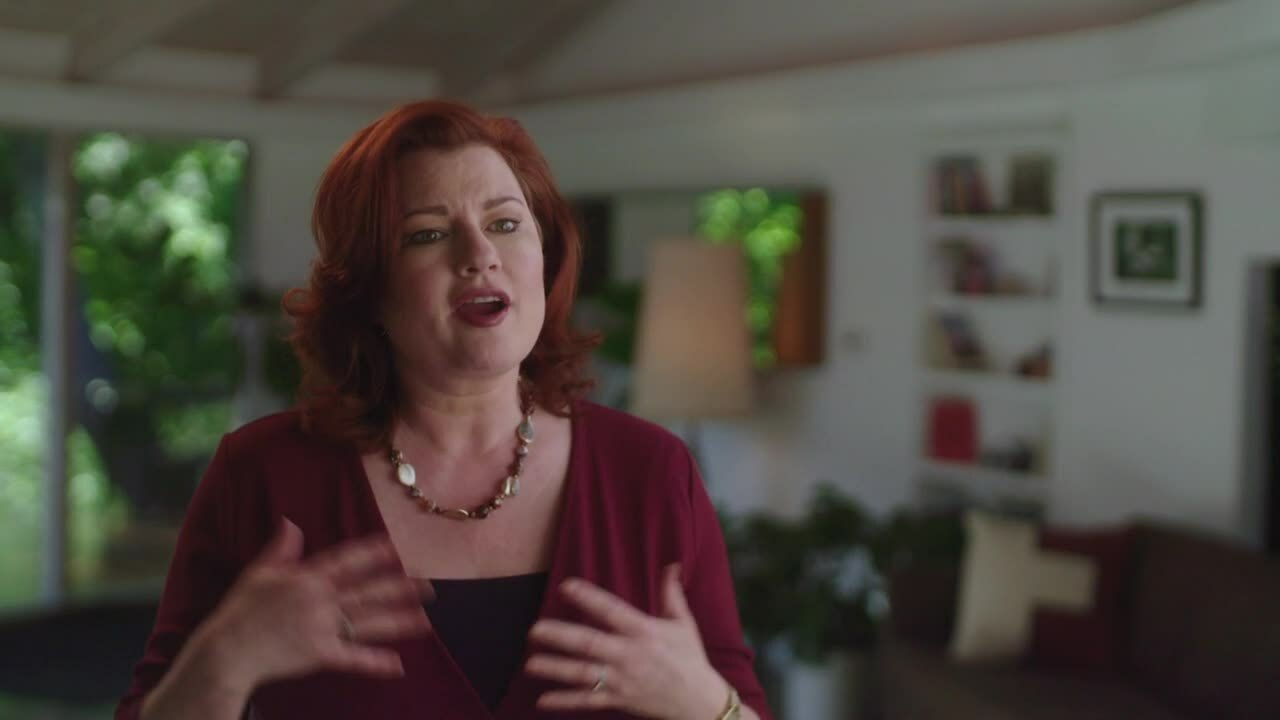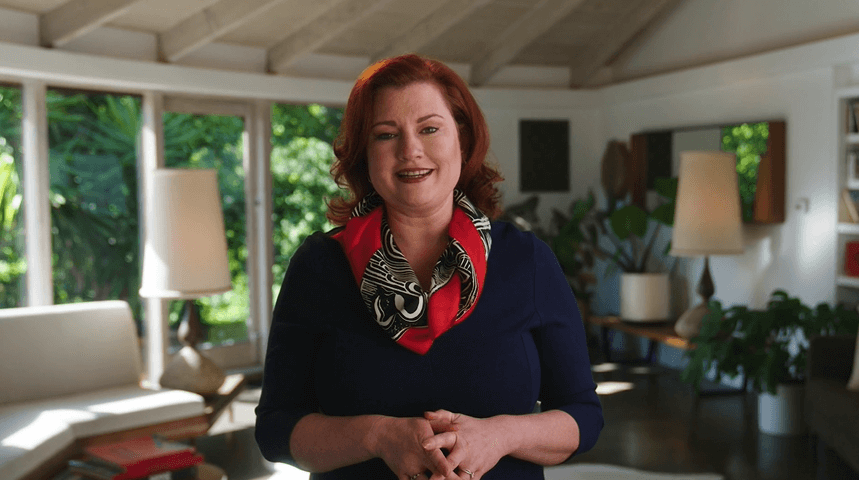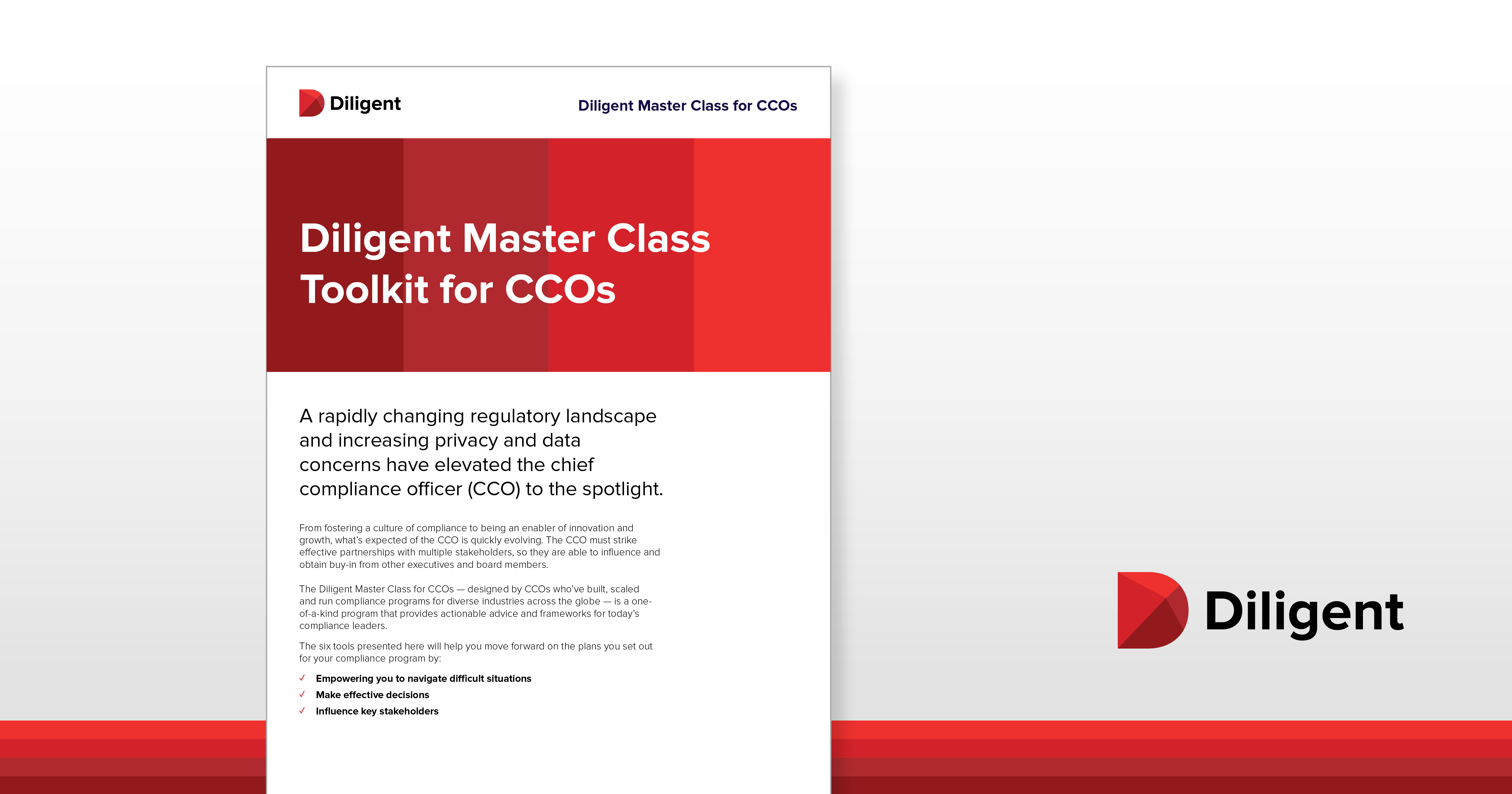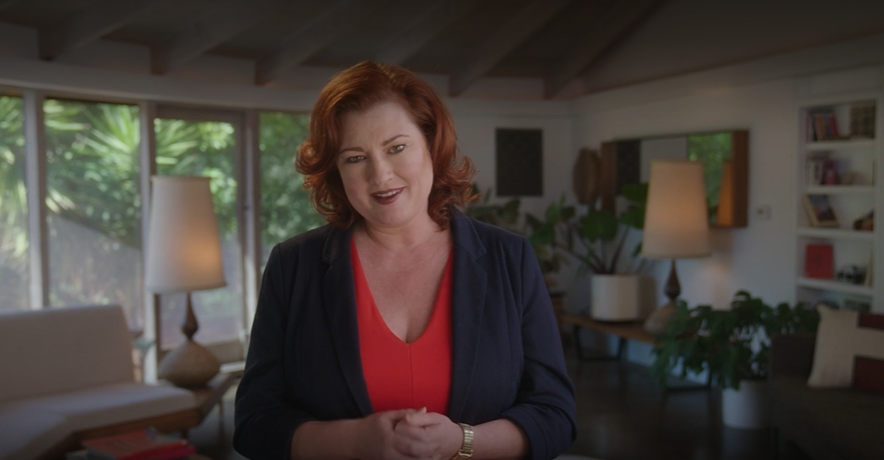
This is the third blog in a 6-part series, the Diligent Master Class for CCOs (Chief Compliance Officers). Designed by CCOs who’ve built, scaled and run compliance programs for diverse industries across the globe, this is a one-of-a-kind program that provides actionable advice and frameworks for today’s compliance leaders. You may want to check out the previous blog in this series, Making the Case for More Resources.
“Buy-in” is a curious phrase. People buy into all sorts of things – poker games, conspiracy theories and streaming online services, to name three. Buying into something requires giving of time, money, energy or commitment. The key is to be selling something people want to buy.
When you’re the chief compliance officer (CCO), you’re selling your vision of what the compliance and ethics department can do, and how good the company can be as a result. Your vision needs to be compelling enough to get the executive team and board to buy in, which means giving you their time, budget, energy and commitment to help actualize your vision.
Buy-in is elusive. It’s hard to capture and hard to hang onto. But there are ways to make it easier, the most powerful of which is storytelling.
Why Stories Are so Affecting
Stories are tremendously affecting because human brains respond the same way to actions happening to us or in front of us as they do when a story is vividly told. This is the reason books, movies and television are so powerful. Descriptions conjure mental pictures, and these mental pictures stir emotion, which creates the release of hormones through the body. Love stories create the release of serotonin, which makes people feel happy. Horror movies pump adrenaline through people’s veins, making them anxious and alert. These physiological effects are why stories are so much more powerful than facts by themselves. The body changes in response to a compelling story.
Stories don’t have to be extreme to be impactful. Rather, they only need to be interesting enough to the listener to capture their attention. Luckily, in a business world full of tiresome presentations and boring reports, any kind of storytelling can cut through the dross to create curiosity and focused listening.
Why People Avoid Telling Stories
Even when armed with the knowledge of why storytelling is so effective, many people avoid telling stories in business meetings and communications. Hiding behind a graph or chart and reciting numbers is easy. It doesn’t require any vulnerability. Telling a story requires pacing, memory, commitment, and the risk that people either won’t like or won’t understand the story you’re telling. While it can be uncomfortable in the beginning, the more you practice telling stories, the better you will become.
Using Storytelling to Present Your Vision
The most important story you can tell as a CCO is your vision of the company’s compliance and ethics program in three- or five-years-time. Instead of presenting a list of deliverables, create a story based on what the deliverables will create in terms of efficiency, culture and governance.
Let’s say that in three years, you hope to have obtained and implemented data privacy mapping software, but the software is expensive. When you’re presenting your vision to the board, instead of simply saying, “with this software, in three years we will have completed our data mapping which will help with responding to subject access requests,” you could paint the picture of the outcome with a story. You could say, “Imagine that in three years, someone files a subject access request to get copies of all of their personal data. Instead of panicking to try to respond in the short, regulated timeframe, we enter the person’s name into the software, and boom! We immediately have a beautiful report providing all of the data because of the software’s mapping capacity. How comforting is that?”
The outcome trying to be achieved is efficiency and confidence. The first version of the vision describes the factual outcome, not the emotional one. The second version concludes by inviting the listeners to feel how comfortable the new software will make them. This is much more likely to create buy-in.
Where to Use Storytelling
Storytelling can be used throughout your program to great success.
- Presenting Metrics: Whenever you’re presenting numbers, do so in the form of a story. If the number of calls to the hotline is 12, is that good or bad? What do we want it to be? What is the goal and why? What would it look like in the perfect scenario? Always present numbers in a narrative story format that gives them meaning.
- Communications: From emails to videos to infographics, stories are always more fun to engage with than lectures. Create a character going through a problematic situation. Show the progression from confusion to clarity using the policy or tool. Stories stick with people in a way flowcharts do not.
- Policies/Procedures: Include examples in FAQ sections that are written in the first person. Instead of writing, “Where can reports be made?” try, “I’m concerned about something I saw that might be unethical. Where can I make a report?”
- Training: Stories should be the basis of nearly all training. Use real-life scenarios to show people what can happen when things go wrong. Influence researcher Robert Cialdini advises telling stories about people as similar to the audience as possible. Try to find stories matching the audience’s age, seniority in the company, region/geography and industry. The closer the characters in the story are to the audience, the more impactful they will be.
A Picture’s Worth
They say that a picture is worth 1,000 words. While that is certainly true of visual media, it’s also true of the pictures painted in people’s heads when a story is being told. People are much more likely to buy into your vision when they can see it themselves. Seeing it is much easier when the mental picture is being painted by a story. By getting the buy-in you need, you’ll be much more likely to live happily ever after.
Next, find out how CCOs can elevate their position by leading data-driven discussions with the board in Data in the Boardroom.

Kirsty Grant-Hart
Kristy Grant-Hart is the CEO of Spark Compliance and the author of the best-selling book How to Be a Wildly Effective Compliance Officer. She’s a former adjunct professor at Delaware Law School, Widener University, and was previously the Chief Compliance Officer at United International Pictures, the joint venture of Paramount Pictures and Universal Pictures in 65 countries. She’s the winner of the GWICie Award for innovation in the field of compliance and ethics, as well as the Trust Across America Top Thought Leaders in Trust award.
More From Diligent Master Class for CCOs









